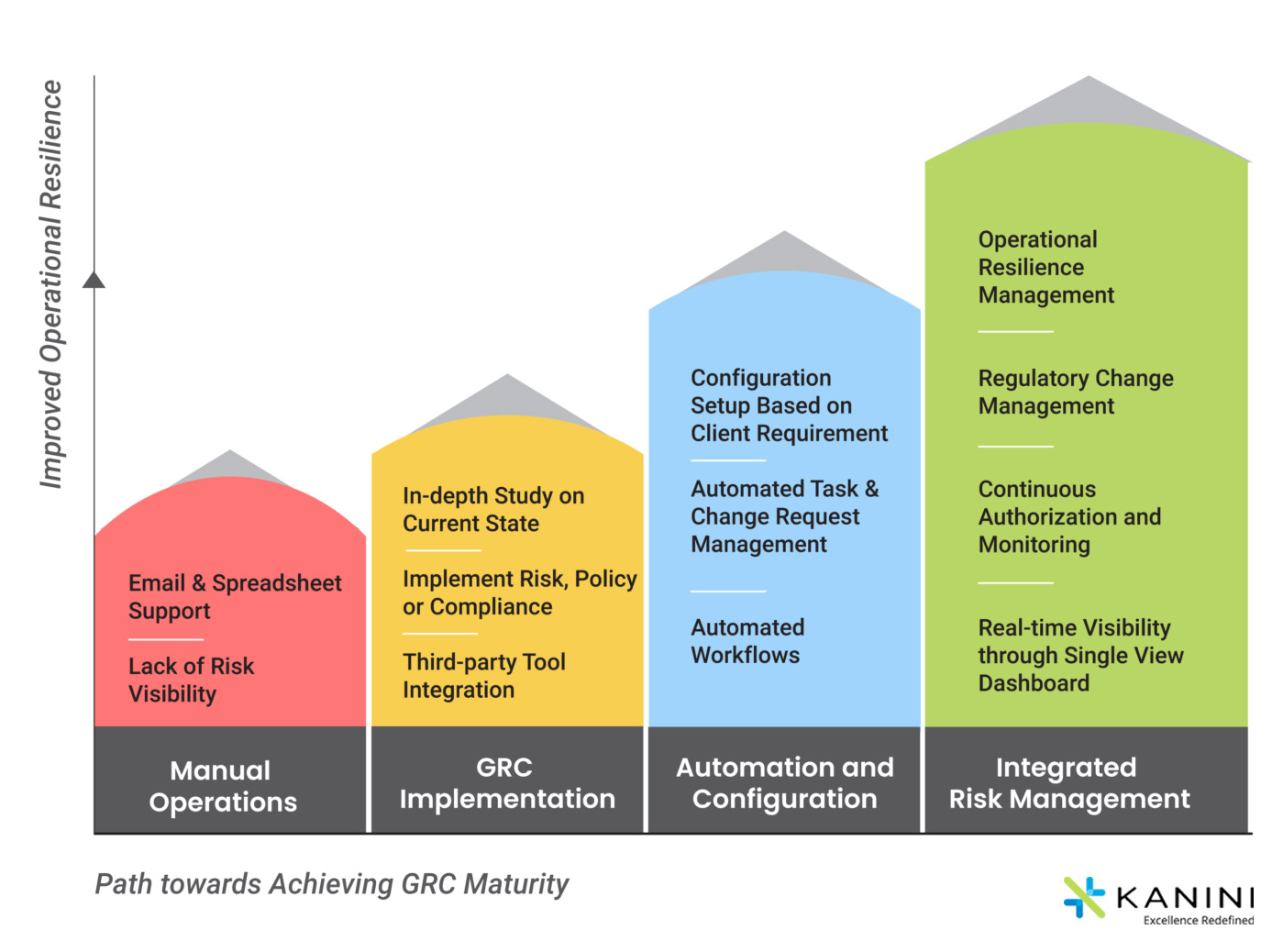Governance, risk, and compliance is a crucial area of focus for many enterprises. Be it small, medium, or large enterprises, they have started investing time and money towards their GRC maturity program to achieve operational excellence with a better risk remedial plan in place. Cross-functional integration between departments establishes transparent communication to all the business stakeholders as and when needed the most.
Organizations are required to develop policies aligned with the authority documents issued by the regulators and government bodies. The Board of directors expects a single unified dashboard view on identifying risks and non-compliance areas within their organization.

Managing GRC (Governance, risk management & compliance) journeys
The four stages on the road to achieving GRC maturity:

Siloed Practice


Reactive Practice
Reactive practice is the initial phase of the roadmap on basic structuring of responsibilities and compliance ownership delegation to a single team. A well-defined GRC process in ServiceNow documentation is determined and published across various departments to ensure data security.
Reactive Practice
Reactive practice is the initial phase of the roadmap on basic structuring of responsibilities and compliance ownership delegation to a single team. A well-defined GRC process in ServiceNow documentation is determined and published across various departments to ensure data security.

Proactive Practice
At this proactive level, proper allocation of responsibilities to a specific team to handle risk and compliance. Policies are put forth in such a way that they comply with authority documents issued by the regulators and government bodies. Policies can be updated in the future as and when the regulators change the policies. ServiceNow plug-ins ensure stakeholders can make a quick reference to the policy framework without undergoing any manual process.


Optimization Practice – GRC Maturity
Clear identification of roles and responsibilities gives an upper hand to all the stakeholders to gain an intuitive view of governance, risk, and compliance in a single view of truth. At this level, a complete audit lifecycle is planned and integrated across departments. Business owners can make decisions on the go with readily available real-time insights.
Optimization Practice – GRC Maturity
Clear identification of roles and responsibilities gives an upper hand to all the stakeholders to gain an intuitive view of governance, risk, and compliance in a single view of truth. At this level, a complete audit lifecycle is planned and integrated across departments. Business owners can make decisions on the go with readily available real-time insights.

How does ServiceNow GRC tackle it?
ServiceNow GRC automates the business workflows associated with employees, customers, third-party vendors, IT, internal and external auditors to achieve complete control over the GRC program. The transition period is quick in the ServiceNow GRC platform, and it seamlessly integrates all the applications into a single system of record, thus assuring complete compliance.
How does ServiceNow enable GRC maturity?

The Conclusion
ServiceNow Integrated Risk Management (IRM) application allows enterprises to stay on top of risks by having well-defined best practices and unified communication between all the business units.
Author

Joshua Smith
Joshua is a process improvement thought leader and digital transformation expert at KANINI. Over the past 15 years, his focus has always been on achieving organizational maturity and enhancing business processes through implementing tools and workflows to drive transformation initiatives. With experience in multiple verticals from – manufacturing to healthcare, Joshua brings a practitioner’s perspective when working on business solutions and goals to allow him to advise and guide on industry and process best practices.








